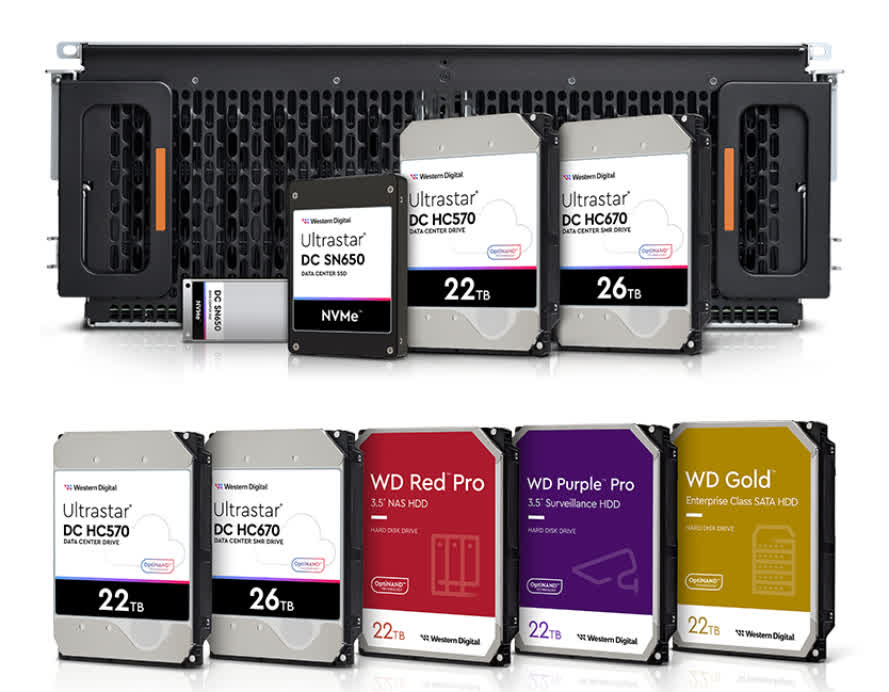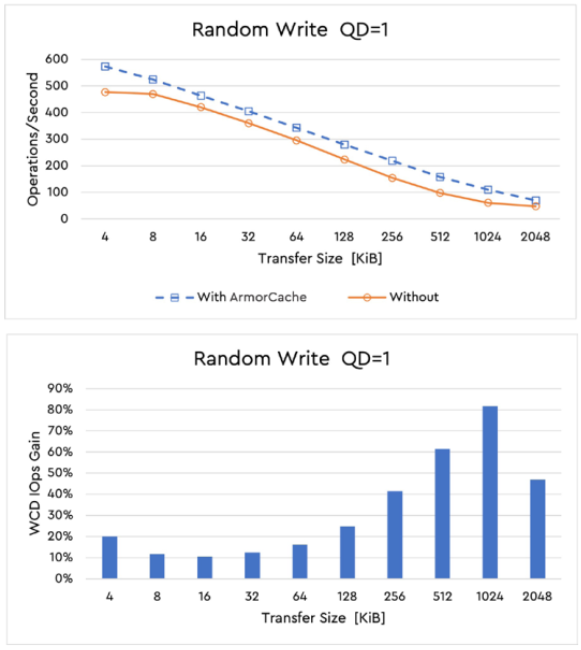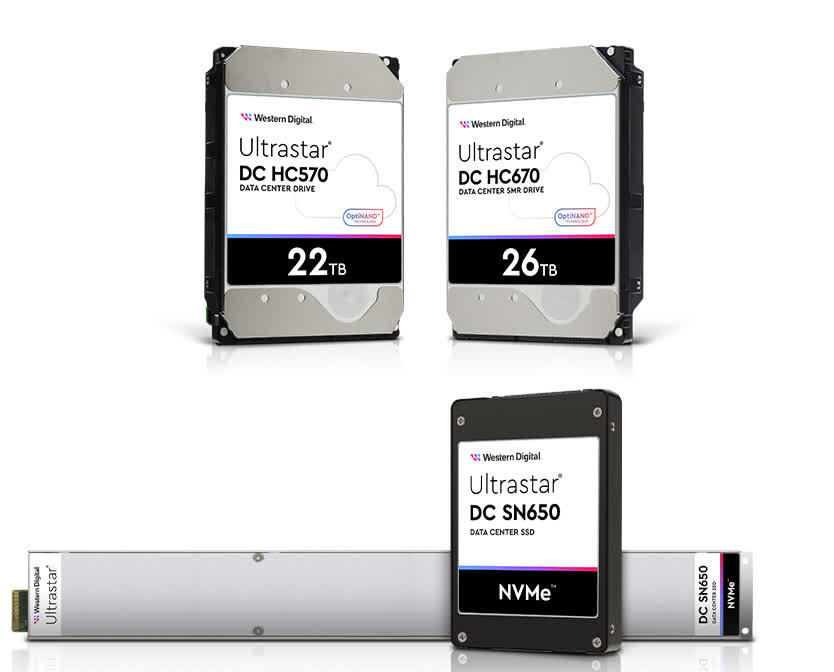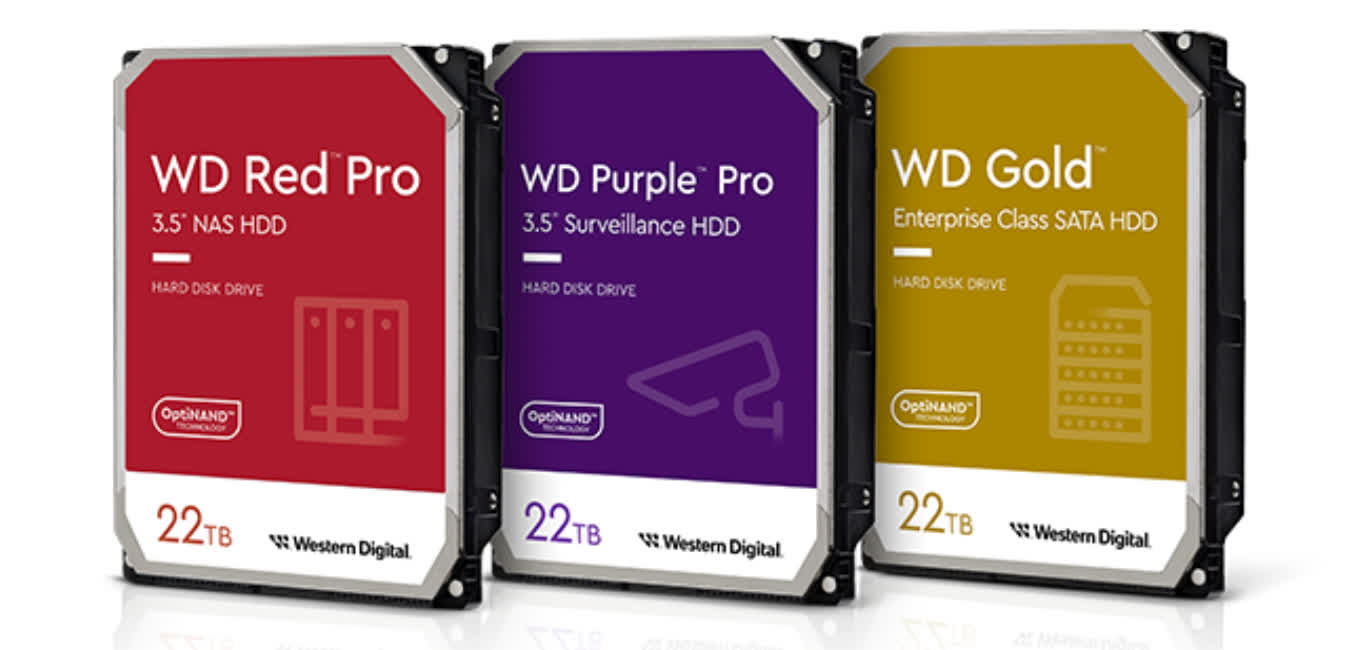Bottom line: WD recently announced a slew of storage products, and the Ultrastar-branded 26TB DC HC670 and 22TB DC HC570 take the lead when it comes to HDD data storage and areal density. Closing in on the slower medium's capacity advantage, meanwhile, is the upcoming Ultrastar 15.36TB DC SN650 NVMe SSD. These drives are currently being tested with select WD customers and will begin shipping in the coming months.

WD has included a host of storage technologies in what it says are the world's first 22TB CMR-based and 26TB SMR-based HDDs. The latter, denser model is able to store 2.6 terabytes of data per platter, while the former CMR version can store 2.2 terabytes on each of its 10 stacked platters.
In addition to outright capacity, these helium drives also utilize WD's ArmorCache technology that aims to combine the performance benefits of write cache enable with the data protection of write cache disable state. They achieve this feat with OptiNAND technology, seen previously in WD's 20TB ePMR drive.
Faster and high-capacity UFS storage onboard the drive enables all data in the DRAM cache to be written on the non-volatile memory in case of a power outage, allowing for up to 40 percent faster IOPS performance over non-OptiNAND drives with 256KB and larger files, and a peak 80 percent improvement with 1MB transfer sizes during random writes.

Moreover, ArmorCache is said to improve overall performance as the drive doesn't require time consuming data integrity checks upon reboot and can quickly resume normal write operations. WD says the tech can also help companies cut down on UPS / battery costs as it is meant to ensure that cache data is successfully written in the event of a power loss.
The third Ultrastar-branded drive is the TLC-based DC SN650, a capacious 15.36TB PCIe 4.0 NVMe SSD for enterprise customers looking for more premium, low-latency storage with much faster throughput than HDDs.

WD didn't share performance numbers for the drives but noted that the SSD, currently being sampled, will be available in Q2 2022 in the slimmer E1.L size for servers as well as the regular 2.5-inch form factor. The aforementioned HDDs are also being sampled with select customers and expected to arrive in the summers.
Meanwhile, smaller businesses and home NAS users will also be able to purchase 22TB drives soon with the launch of WD Purple Pro (video/surveillance), Red Pro (NAS) and Gold (enterprise-grade) HDDs.

Pricing for these CMR drives is yet to be revealed, however, prospective buyers can expect overall cost per gigabyte to continue its downward trend. Like WD's recently announced gaming-focused Black SN850X and P40 SSDs, these drives will begin shipping in the summer.
https://www.techspot.com/news/94545-western-digital-upcoming-26tb-ultrasmr-hdd-data-centers.html